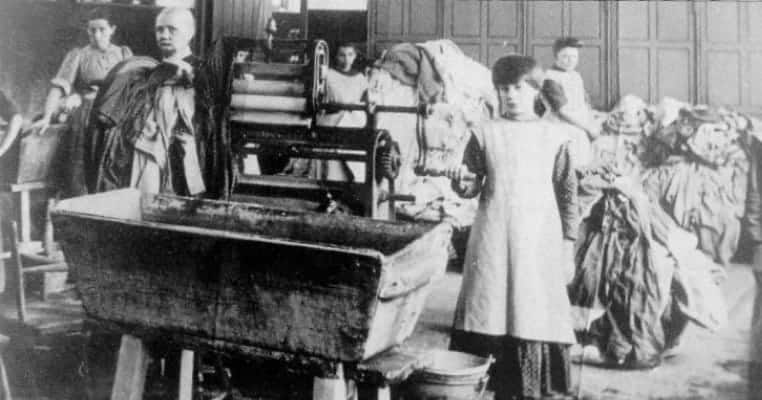Not that long ago, girls and women who defied societal norms were forced into convents and reform institutions. “Do-gooders” established homes in Australia, Europe, and North America to forcibly reform girls and women who simply did not adhere to the rules of polite society. Pregnant and unmarried, physically or mentally challenged, or simply poor girls and women entered into complexes of reform homes, industrial schools, orphanages, mother and baby homes, and convents. Inside these complexes were commercial laundries where inmates labored without pay. Named for the biblical character Mary Magdalen, these Magdalen Laundries or Asylums incarcerated thousands of women. Below are 16 such laundries.
16. The Birth of the Magdalen Laundry: Whitechapel, England 1758

Outside the city walls of London was the early suburb of Whitechapel. This East End enclave housed some of the poorest residents of the growing and industrializing city in the 18th century. Throughout the district were slaughterhouses, foundries, breweries, and tanneries. The byproduct of these industries created a powerful rotting flesh scent coupled with raw sewage. Poverty was rampant; as was hunger, abuse, and neglect. Pious reformers believed that the best way to reform prostitutes was to provide them with food, shelter, and religious instruction while they labored without pay.
A silk merchant opened the Magdalen Hospital for the Reception of Penitent Prostitutes in 1758. Inside the walls, prostitutes and unmarried pregnant females entered the Hospital and began working as laundresses. The goal was for the reformed women to reenter society as respectable and upstanding citizens. It became a sort of sport for the extremely wealthy to visit the Hospital as a tourist attraction and watch the inmates labor as they cleaned linens for hotels and private citizens. The laundry became a model for what to do with “fallen women.”

